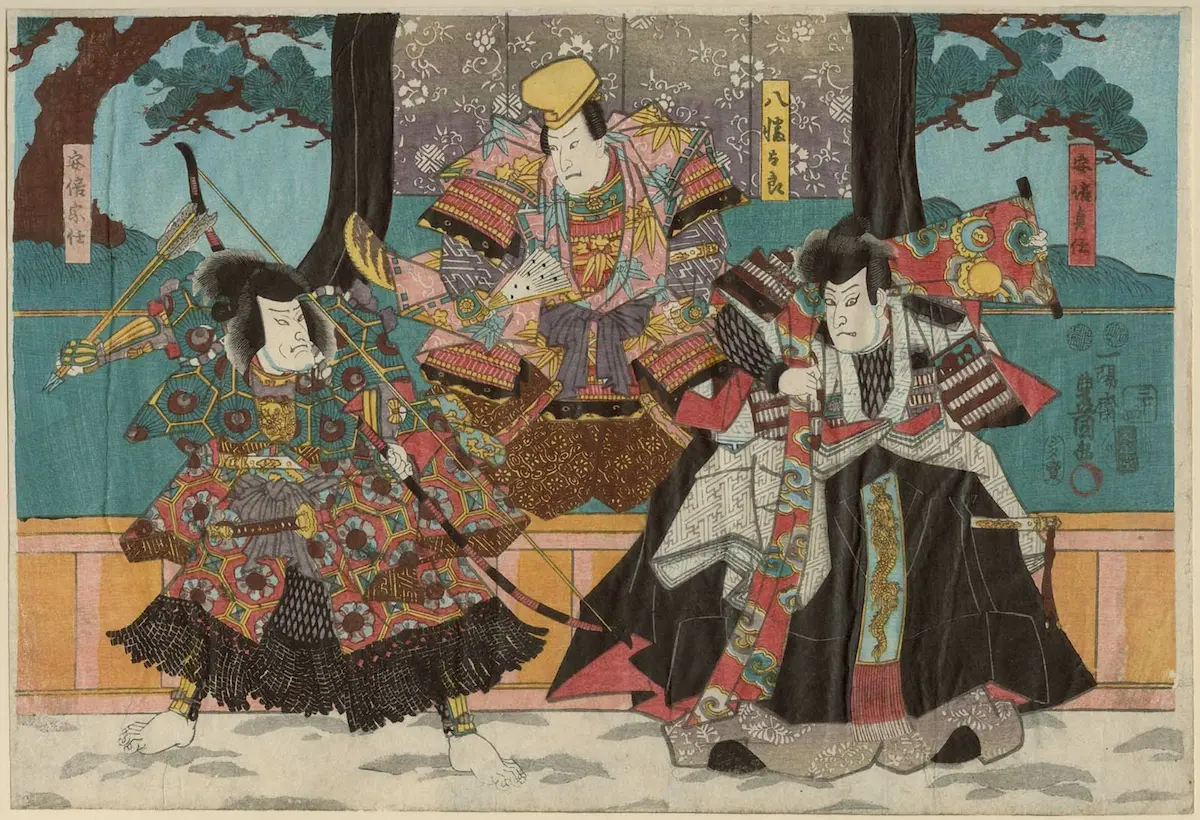The Former Nine Years’ War (Zen Kunen no Eki or Zenkunen War) was a defining conflict in Japan’s late Heian period. It unfolded from 1051 to 1062 in the Mutsu Province, part of the Tohoku region.
Learn about the events leading up to the conflict, the critical battles fought, and the impact on Japan’s feudal history. The Zenkunen War highlights the struggle between the central government and the regional Abe clan, underscoring the shifting power dynamics in medieval Japan.
Key Takeaways
- The Former Nine Years’ War was a significant conflict in the late Heian period of Japan, involving a power struggle between the central government and the Abe clan in Mutsu Province.
- Key battles, including the Battle of Onikiribe and the siege of Kuriyagawa Castle, were pivotal in determining the war’s outcome.
- The war led to the fall of the Abe clan, a shift in regional power to the Kiyohara clan, and the recognition of Minamoto no Yoriyoshi from the imperial court.
- The conflict underscored the importance of strategic alliances, military strength, and political maneuvering in feudal Japan.
Prelude to Former Nine Years’ War
Rise of the Abe Clan
Under the leadership of their chieftain, the Abe clan gained significant control in Mutsu by the late 11th century. Appointed as district magistrates, they maintained this position for generations, fortifying their power by constructing at least twelve strategic palisades. This autonomy led Mutsu to resemble a semi-independent region.
The Abe’s lineage, as recorded, suggests they were once Emishi (eastern barbarians) who submitted to the imperial court – a rare occurrence in Heian Japan where local governance was seldom entrusted to powerful families.
Expansion and Defiance
The Abe clan’s influence expanded southward, notably under the chieftainship in the “Back Six Districts” north of Koromogawa. Their growing autonomy and refusal to pay taxes and corvee dues to the central government sparked tensions.
The Mutsu governor and Akita vice-governor’s failed military response against this defiance only solidified Abe’s position.
Minamoto no Yoriyoshi’s Appointment
In 1051, the government appointed Minamoto no Yoriyoshi as the governor of Mutsu and Shogun of the Chinjufu, tasked with subduing the Abe.
Yoriyoshi, a skilled archer and favored courtier with ties to powerful families through marriage, had previously helped suppress the rebellion of Tadatsune. His arrival in Mutsu marked a pivotal moment in the looming conflict.
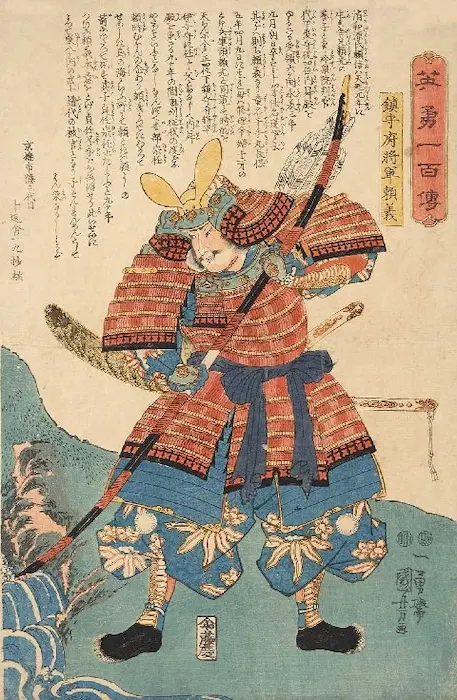
The Abe’s Initial Submission
The Abe chief, Yoritoki, initially chose submission, taking advantage of a general amnesty to align with the powerful new governor.
This apparent peace, however, was short-lived. The underlying tensions and past grievances soon reignited the flames of conflict, setting the stage for the ensuing battles of the Former Nine Years’ War.
The Battles of Former Nine Years’ War
The Former Nine Years’ War, fueled by escalating tensions and political ambitions, unfolded through a series of significant battles, marking it as a pivotal conflict in Japan’s Heian period.
The Battle of Onikiribe
The conflict ignited with the Battle of Onikiribe. In this early confrontation, the Abe clan, under Abe no Yoritoki, demonstrated their military prowess by defeating a large force sent by the Mutsu governor, Fujiwara no Tameie, and Taira no Shigenari of Akita Castle.
This victory solidified Abe’s defiance against the central government’s authority.
The Akuri River Incident
A critical turn in the war occurred in 1056 at the Akuri River. The conflict was reignited over a personal insult involving Abe no Sadato (Yoritoki’s son) and Fujiwara no Mitsusada, a commander under Yoriyoshi. This incident escalated tensions, resuming hostilities between the Abe clan and the imperial court.
The Battle of Kawasaki
In 1057, the Abe clan, showcasing their numerical and logistical superiority, decisively defeated Yoriyoshi’s forces at Kawasaki Stockade. The Abe, commanding a force of approximately 4,000, overpowered the exhausted and outnumbered provincial government army.
Yoriyoshi barely escaped with his eldest son, Yoshiie, and just seven horse riders. This battle was a significant setback for the government forces.
The Death of Yoritoki
The following year saw a strategic maneuver by Yoriyoshi, resulting in the death of Abe no Yoritoki. Yoriyoshi’s plan involved persuading Yoritoki’s captives to switch allegiances, leading to an ambush that fatally wounded Yoritoki.
This incident marked a turning point in the war, as the leadership of the Abe clan passed to Yoritoki’s son, Sadato.
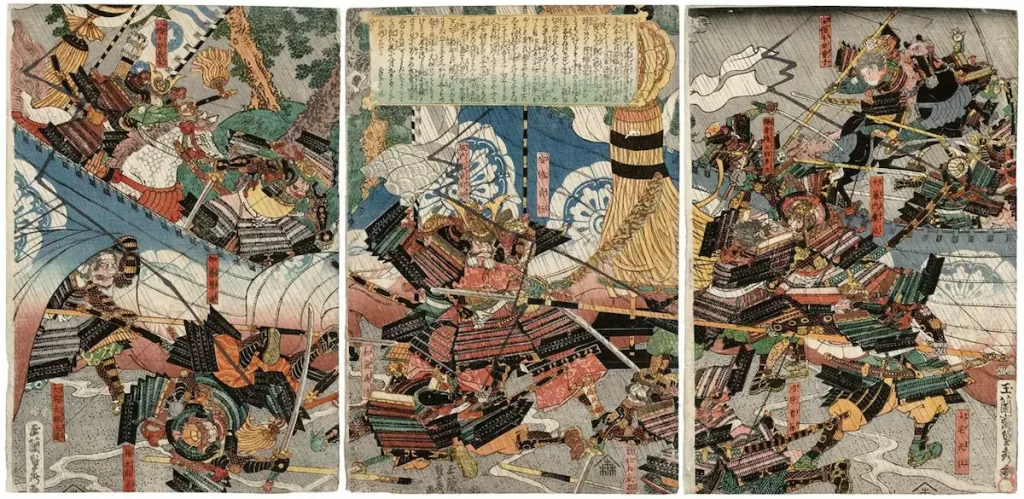
The Kiyohara Clan’s Involvement
As the war dragged on, Yoriyoshi, seeking to bolster his forces, managed to involve the Kiyohara clan. Their addition significantly strengthened the imperial forces, with Kiyohara no Takenori leading a substantial army divided into seven units.
The alliance shifted the war’s momentum in favor of the government.
The Fall of Kuriyagawa Castle
The conflict pinnacled with the siege of Kuriyagawa Castle in 1062. The combined forces of Yoriyoshi and the Kiyohara, now numbering over 10,000, besieged the last Abe stronghold.
The battle resulted in the capture and subsequent death of Abe Sadato, effectively ending the Abe clan’s resistance and concluding the Former Nine Years’ War.
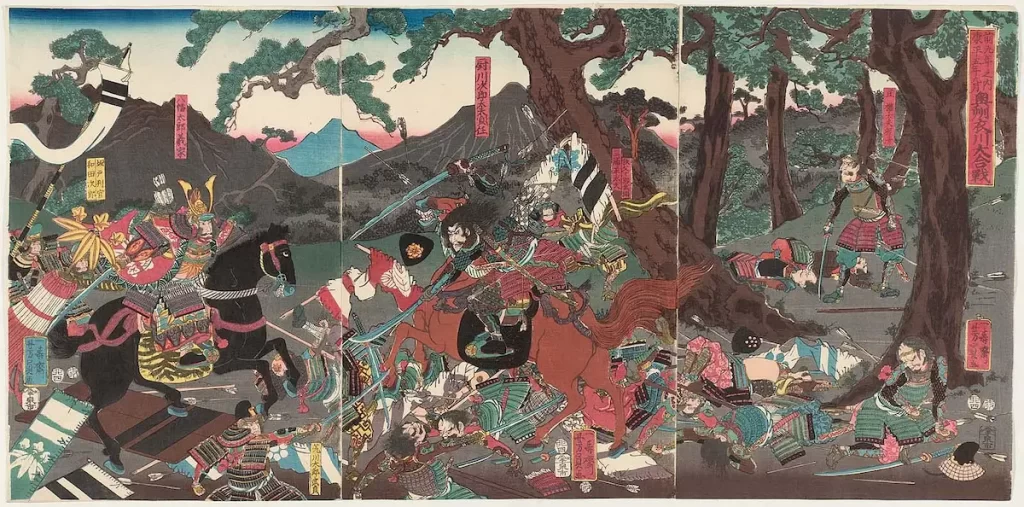
Aftermath of Former Nine Years’ War
The Fall of the Abe Clan
The defeat and subsequent extinction of the Abe clan were the most immediate outcomes of the war. Following the capture and death of Abe no Sadato at Kuriyagawa Castle, the clan’s influence in Mutsu Province effectively ended. Abe no Munetō, Sadato’s brother, was sent into exile.
The fall of Abe represented a military defeat and the demise of a formidable regional power that had challenged the central government’s authority.
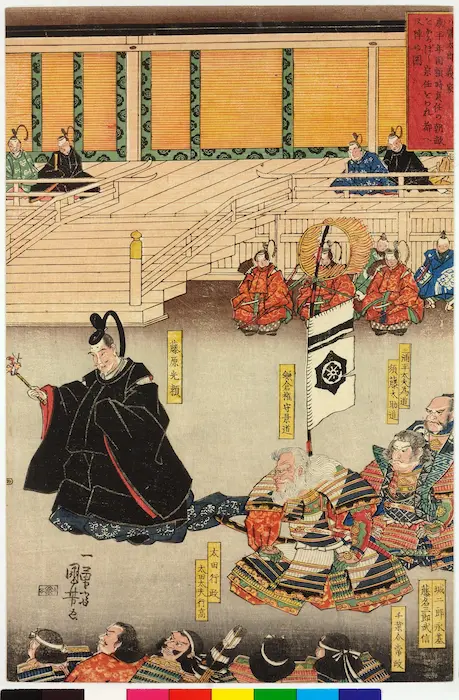
Recognition and Rewards for Minamoto Clan
Minamoto no Yoriyoshi, whose military leadership was instrumental in quelling the Abe rebellion, received significant recognition from the court. In 1063, he was promoted to Junior Fourth Rank, Lower Grade, and appointed Governor of Iyo Province. This promotion was a testament to his achievements in the campaign and his service to the central government.
Minamoto no Yoshiie, Yoriyoshi’s eldest son, was promoted to Junior Fifth Rank, Lower Grade, and appointed as the Governor of Dewa Province.
The Rise of the Kiyohara Clan
The Kiyohara clan, who had allied with Yoriyoshi and played a crucial role in the final stages of the war, also reaped rewards. Kiyohara no Takenori was elevated to Junior Fifth Rank, Upper Grade, and appointed General of the Chinjufu, granting the clan control over Oku Rokugun (the Six Back Districts).
This positioned the Kiyohara as the new rulers of the Ou region, signifying a major shift in regional power dynamics. Yet, more than two decades later, tensions within the Kiyohara Clan would erupt into the Gosannen War.
Long-term Implications
The Former Nine Years’ War significantly influenced the political landscape of Japan. It demonstrated the central government’s resolve to maintain control over regional powers and set a precedent for future conflicts between the imperial court and regional clans.
The war also highlighted the importance of strategic alliances and military prowess in the feudal era, which would continue to shape Japan’s history in the centuries to come.
Frequently Asked Questions
What was the cause of the Former Nine Years’ War?
The cause of the Former Nine Years’ War was the growing power and defiance of the Abe clan in Mutsu Province, leading to a clash with the central government over control and authority.
Who were the main characters involved in the war?
The main characters involved in the war were the Abe clan, led by Abe no Yoritoki and his son Sadatoki, and the central government’s forces, led by Minamoto no Yoriyoshi and the Kiyohara clan.
Who won the Former Nine Years’ War?
The central government, led by Minamoto no Yoriyoshi with the support of the Kiyohara clan, won the Former Nine Years’ War.
Further Reading
- The Cambridge History of Japan: Volume 2 (Heian Japan)

